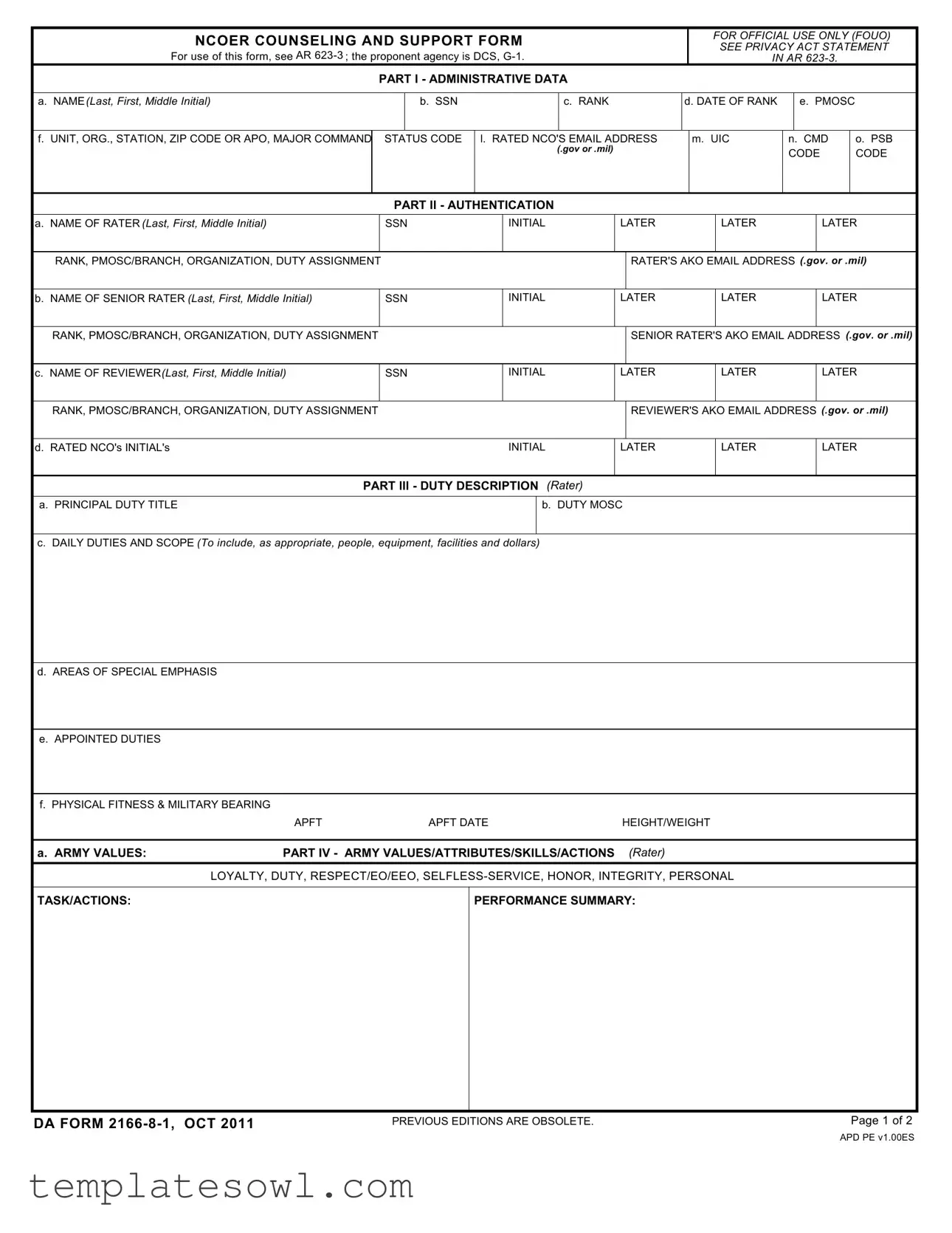What is the purpose of the DA 2166-8-1 form?
The DA 2166-8-1 form serves as a counseling and support tool for Non-Commissioned Officers (NCOs) within the U.S. Army. This form is designed to assist in documenting an NCO's performance and development throughout the evaluation period. It allows raters to provide feedback, set goals, and outline specific areas for improvement. This promotes accountability and encourages professional growth among NCOs.
Who is required to complete this form?
The DA 2166-8-1 form is typically completed by the rater of the NCO being evaluated. The rater should be someone who has directly overseen the NCO’s work performance. Additionally, a senior rater and a reviewer are required to validate the evaluation process. Thus, multiple individuals are involved to ensure a comprehensive assessment of the NCO’s performance.
What information is included in Part I of the form?
Part I of the DA 2166-8-1 form focuses on administrative data. It collects essential information such as the rated NCO's name, Social Security Number (SSN), rank, date of rank, and the unit or organization to which the NCO belongs. This foundational data helps ensure that evaluations are accurately attributed to the correct individuals and provides context for their assessments.
How does the form address the NCO's performance in relation to Army values?
Part IV of the form evaluates an NCO's performance by aligning it with Army values, attributes, skills, and actions. This section allows raters to assess how well the NCO demonstrates loyalty, duty, respect, selfless service, honor, and integrity. Each value is accompanied by specific task/actions and performance summaries, ensuring a holistic review of the NCO's commitment to the Army’s core values.
What are the consequences of not completing the DA 2166-8-1 form?
Failing to complete the DA 2166-8-1 form can result in a lack of formal feedback for the NCO, which can hinder their professional development and performance improvement. Additionally, incomplete evaluations can affect promotion opportunities and the overall readiness of the unit. It is essential that the evaluation process is followed meticulously to uphold accountability and maintain high performance standards within the Army.
How is the DA 2166-8-1 form used in conjunction with other evaluation documents?
The DA 2166-8-1 form is often used as a supplementary document to the NCO Evaluation Report (NCOER). It provides specific insights and context that enhance the overall evaluation narrative. By detailing the rated NCO's daily duties and performance summary, the DA 2166-8-1 informs the rater and senior rater when they complete the formal evaluation, ensuring a more comprehensive picture of the NCO's contributions.
